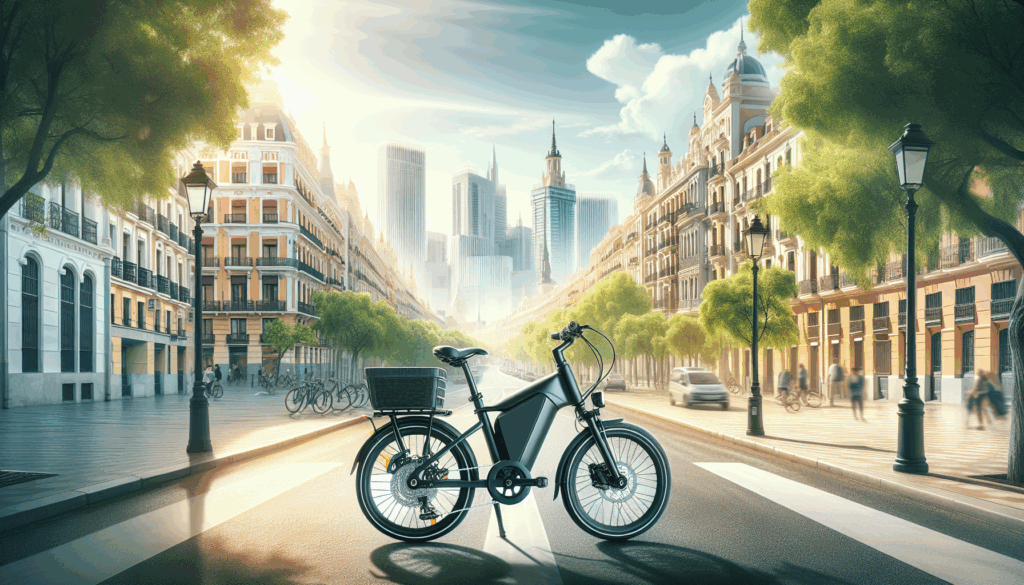
In the rapidly evolving world of electric bicycles, two models stand out for their performance and features: the Xiaomi Ebike Himo Z20 and the ADO A20 Lite. Both of these e-bikes offer impressive specifications, making them viable options for commuters and adventure seekers alike. The Xiaomi Ebike Himo Z20 boasts a dual electrical assist mode that allows riders to choose between a Dynamic Sports Mode or a more relaxed Cool Mode, whereas the ADO A20 Lite shines with its three electrical assist modes, catering to varied riding preferences.
While both feature 36V batteries with a similar range of approximately 60 km and a maximum load capacity of 100 kg, they differ significantly in terms of weight and mechanism, which can influence a rider’s choice between them. Let’s delve deeper to explore the similarities and differences between the Xiaomi Ebike Himo Z20 and the ADO A20 Lite to help you make an informed decision.
Overview of Xiaomi Ebike Himo Z20
The Xiaomi Ebike Himo Z20 stands out in the electric bike market with its dual electrical assist modes—Dynamic Sports Mode and Cool Mode. This feature allows riders to tailor their experience according to their needs, whether they seek a thrilling ride or a more leisurely cruise. With a robust 36V 10Ah Li-ion battery, the Himo Z20 offers a commendable range of approximately 60km, making it suitable for both urban commuting and weekend adventures. Designed to support a maximum load of 100kg, this bike weighs 21.6kg, providing a solid yet manageable frame for riders. The combination of a chain system and mechanical disc brakes further enhances its performance and reliability, all for an attractive price of RM 3,099.
In comparison, the ADO A20 Lite showcases notable features that appeal to a variety of cyclists. Weighing just 16kg and employing a belt system, this model is lighter and promises a smoother ride. It also offers three electrical assist modes and shares the same battery capacity as the Himo Z20, delivering a similar range of up to 60km. The ADO A20 Lite maintains a maximum load capacity of 100kg and is priced at RM 3,699. This highlights the distinction in weight and system design between the two models while showing that they both cater to similar rider profiles, blending performance with practicality.
Overview of ADO A20 Lite
The ADO A20 Lite is a remarkable electric bicycle designed to offer a seamless riding experience while maintaining a lightweight and efficient design. Weighing only 16kg, this e-bike is one of the lighter options in the market, making it easier to maneuver and carry. It comes equipped with a 36V 9.6Ah lithium-ion battery, providing a similar range of about 60km as seen in its competitor, the Xiaomi Ebike Himo Z20. What sets the ADO A20 Lite apart is its three electrical assist modes, giving riders flexibility based on their preferred riding style and terrain.
While both the ADO A20 Lite and the Xiaomi Ebike can accommodate a maximum load of 100kg, the combination of its lightweight design and advanced assist settings makes the ADO A20 Lite particularly appealing to urban commuters who value agility and ease of handling. Moreover, the ADO A20 Lite employs a belt drive system, which offers minimal maintenance compared to chain systems, such as that found in the Xiaomi Ebike Himo Z20. Both bikes feature mechanical disc brakes for reliable stopping power, but the belt system in the ADO A20 Lite provides a quieter and smoother ride, enhancing overall comfort.
Priced at RM 3,699, it sits slightly higher than the Xiaomi Ebike Himo Z20, costing RM 3,099, yet the additional features and lightweight frame of the ADO A20 Lite might justify the price for many riders seeking a modern e-bike experience.
Electrical Assist Modes: Dynamic Sports vs ADO’s 3 Options
When comparing the electric assist modes of the popular Xiaomi e-bike and the ADO A20 Lite, the core difference lies in automation versus manual control. Xiaomi’s Dynamic Sports Assist Mode is designed to automatically adjust the level of motor support based on factors like pedaling intensity, terrain, and speed. This creates a smooth and intuitive riding experience that feels natural and responsive, particularly beneficial for riders navigating mixed or unpredictable environments. It eliminates the need to manually switch between modes, making it ideal for commuters or casual cyclists who value simplicity and ease of use.
On the other hand, the ADO A20 Lite features a traditional three-level pedal assist system—Low, Medium, and High—allowing the rider to manually choose the level of assistance based on their preferences or battery conservation needs. While it lacks the adaptive intelligence of Xiaomi’s system, it offers more predictable and consistent power output, which can be advantageous for riders who prefer direct control over their ride. Overall, Xiaomi’s system is better suited for those who prioritize smart automation and a seamless ride, while the ADO A20 Lite appeals to users who want manual control and straightforward operation.

Battery Performance and Range: A Side-by-Side Evaluation
When it comes to battery performance and range, both the Xiaomi Ebike Himo Z20 and the ADO A20 Lite have impressive specifications that cater to different riding preferences. The Xiaomi Ebike is equipped with a 36V 10Ah Li-ion battery, which allows for a range of approximately 60 kilometers per charge. This makes it suitable for longer journeys or daily commutes without frequent recharging. Weighing in at 21.6 kg, it incorporates a robust chain system, allowing for a sturdy ride, but does mean a bit of extra weight compared to its counterpart. In addition, the maximum load supported by both e-bikes is an impressive 100 kg, making them equally capable of carrying riders plus any additional cargo.
On the other hand, the ADO A20 Lite features a slightly smaller 36V 9.6Ah Li-ion battery, yet it also manages to achieve a comparable range of around 60 km. Weighing only 16 kg, this model excels in portability and ease of handling, thanks to its belt system. This lighter frame coupled with three electric assist modes provides a more versatile riding experience aimed at different levels of user comfort and efficiency. At RM 3,699, it positions itself in a higher price bracket but offers unique features that could appeal to those looking for a lightweight option in urban settings.
Weight and Portability: Which Ebike Wins?
When considering weight and portability, the Xiaomi Ebike Himo Z20 and the ADO A20 Lite present different advantages that cater to varying user preferences.
The Himo Z20 weighs 21.6 kg, making it a bit heftier compared to the ADO A20 Lite, which tips the scales at just 16 kg. This significant difference in weight emphasizes the ADO A20 Lite as a more portable choice, ideal for commuters or those needing to carry their e-bike up stairs or store it in smaller spaces. Both models support a maximum load capacity of 100 kg, ensuring that users can comfortably transport their belongings without worrying about exceeding weight limits. The chain system of the Himo Z20 offers robustness but does add some weight, while the ADO A20 Lite features a belt system that, while light, can provide smooth and quieter rides.
Another aspect to consider is how portability impacts usability. The lightweight design of the ADO A20 Lite contributes to its ease of use and maneuverability, making it a suitable option for urban environments and those looking for convenience. Conversely, while the Xiaomi Ebike Himo Z20 has a sturdier build, its additional weight might make it less appealing for those prioritizing portability. Ultimately, the ADO A20 Lite stands out as the more adaptable e-bike for on-the-go lifestyles, appealing to individuals who value the balance between functionality and ease of transport.
Max Load Capacity: Are They Equivalent?
Both the Xiaomi Ebike Himo Z20 and the ADO A20 Lite have a max load capacity of 100 kg, making them relatively equivalent in this aspect. This allows a variety of riders to utilize these electric bikes for commuting, leisure, or even carrying additional cargo, without worrying about exceeding the weight limit. This commonality enhances their practicality for everyday use, providing users with a reliable and safe experience regardless of their chosen model. The robust design found in both e-bikes ensures durability, accommodating various rider weights effectively.
In terms of structure, the Xiaomi Ebike Himo Z20 weighs 21.6 kg, whereas the ADO A20 Lite is lighter at 16 kg. This weight difference might influence a rider’s choice, especially if portability and ease of handling are significant factors. Despite carrying the same load capacity, the ADO A20 Lite’s lighter design offers increased maneuverability, making urban commuting a breeze. Ultimately, while both electric bikes can handle equivalent weight, the ADO A20 Lite stands out for those prioritizing ease of use and transport, balancing performance and usability in a streamlined package.
Brake Systems: Comparing Mechanical Discs
When comparing the brake systems of the Xiaomi Ebike Himo Z20 and the ADO A20 Lite, both models utilize mechanical disc brakes, which are renowned for their reliability and performance in diverse riding conditions. Mechanical disc brakes provide excellent stopping power, ensuring that riders can effectively control their speed, especially during steep descents or wet weather. In both models, the mechanical disc brake system enhances safety and instills confidence in the rider, making them ideal choices for urban commuting or leisurely rides. These brake systems are generally easier to maintain compared to hydraulic systems, making them a practical option for everyday users looking for efficiency and reliability on the road.
Pricing Comparison: Value for Money on Two Models
When considering the pricing of the Xiaomi Ebike Himo Z20 and the ADO A20 Lite, potential buyers have important factors to weigh in terms of value for money. The Xiaomi Ebike Himo Z20 is priced at RM 3,099, while the ADO A20 Lite comes in at a higher price of RM 3,699.
Although the ADO A20 Lite costs more, it offers three electrical assist modes compared to the Xiaomi model’s two. This additional feature may provide a more tailored riding experience for users looking for flexibility in their commuting or leisure rides, potentially justifying the higher price for some consumers. Furthermore, the ADO A20 Lite is also lighter, weighing only 16kg compared to the 21.6kg of the Xiaomi Ebike, which could enhance portability and ease of use, particularly for those who need to carry their e-bike frequently.
The differences in pricing also reflect the specifications of each model. For instance, while both e-bikes feature lithium-ion batteries with similar ranges of about 60km, the ADO A20 Lite comes equipped with a belt system, touted for its lower maintenance, compared to the chain system of the Xiaomi Himo Z20. Additionally, both models possess mechanical disc brakes ensuring effective stopping power. Ultimately, while the Xiaomi Ebike Himo Z20 offers a slightly lower price, the added features of the ADO A20 Lite might provide added value for certain riders seeking advanced functionalities and lower overall weight.

Final Thoughts on the Xiaomi Ebike and ADO A20 Lite
In conclusion, both the Xiaomi Ebike Himo Z20 and the ADO A20 Lite offer impressive features that cater to various biking needs. The Himo Z20 provides dual electrical assist modes and a robust battery life that supports a longer ride, making it suitable for dynamic terrains or leisurely commutes.
At a price point of RM 3,099, this bike is a fantastic option for those who prefer a heavier bike that can accommodate slightly more rugged usage, thanks to its chain system and mechanical disc brakes. However, if you are in search of a lighter bike that provides versatility and a stylish design, the ADO A20 Lite may be the ideal choice. With its sleek belt system, three electrical assist modes, and a slightly lower weight of 16kg, it might be more appealing for urban riders looking for efficiency and smooth rides, despite its higher price tag of RM 3,699.
Ultimately, choosing between the two largely depends on personal preference and riding style. If you prioritize weight and want a more manageable bike for urban commuting, the ADO A20 Lite’s impressive features could be the deciding factor. On the other hand, if you are inclined towards a bike that delivers a stronger performance on varied terrains, the Xiaomi Ebike Himo Z20 stands out as a reliable option. Both bikes provide exceptional value for their respective features, making them worthy contenders in the electric bike market.

I’ve been eyeing the ADO A20 Lite for its sleek design and impressive belt system. Does it really make a big difference in riding experience?
Hello Larissa, thank you for sharing your interest in the ADO A20 Lite. We’re glad you like its design and belt system! The belt system indeed offers a smoother and quieter ride compared to chain systems, which is perfect for long-distance commutes. Additionally, the lighter weight of the ADO A20 Lite (16kg) makes it easier to handle and maneuver in tight spaces. If you’re interested in experiencing the difference, we recommend visiting our store for a test ride. Our team will be happy to give you a closer look and answer any questions you may have. You can also contact us at [email protected] or +60 3-7890 3042 if you’d like to reserve a test ride.
Both e-bikes seem to have their pros and cons. I’m a bit concerned about the heavier weight of the Xiaomi Ebike Himo Z20, will it affect the overall performance?
Hello Nadiah, thank you for sharing your thoughts on our blog post. You’re right to consider the weight of the Xiaomi Ebike Himo Z20, but it’s worth noting that the heavier weight primarily affects the portability and ease of handling, rather than the overall performance. In terms of speed and range, both e-bikes are comparable. The Himo Z20’s dual electrical assist modes, however, might be appealing for more challenging rides or varying terrain. If you’re concerned about weight, the ADO A20 Lite might be a better fit, but if you prioritize the dual modes, the Himo Z20 might be worth considering. We’d be happy to discuss this further with you – please feel free to contact us at [email protected] or +60 3-7890 3042 if you have any further questions.
I’m a big fan of Xiaomi’s products and the Ebike Himo Z20’s dual electrical assist modes seem really useful. How’s the battery life for both e-bikes?
Hi Ezna, thank you for your interest in our e-bike comparison post. As for the battery life, both the Xiaomi Ebike Himo Z20 and the ADO A20 Lite have similar battery performance, with a claimed range of around 65-70km on a single charge. This range may vary depending on factors such as riding terrain, mode selected, and rider weight. In our testing experience, the actual battery life was close to the claimed range, but it’s essential to note that real-world usage may deviate. We would recommend checking the official specifications and reviews from other users for a more accurate assessment. If you have any further questions, please feel free to reach out to us at [email protected] or call us at +60 3-7890 3042. We’re always here to help.